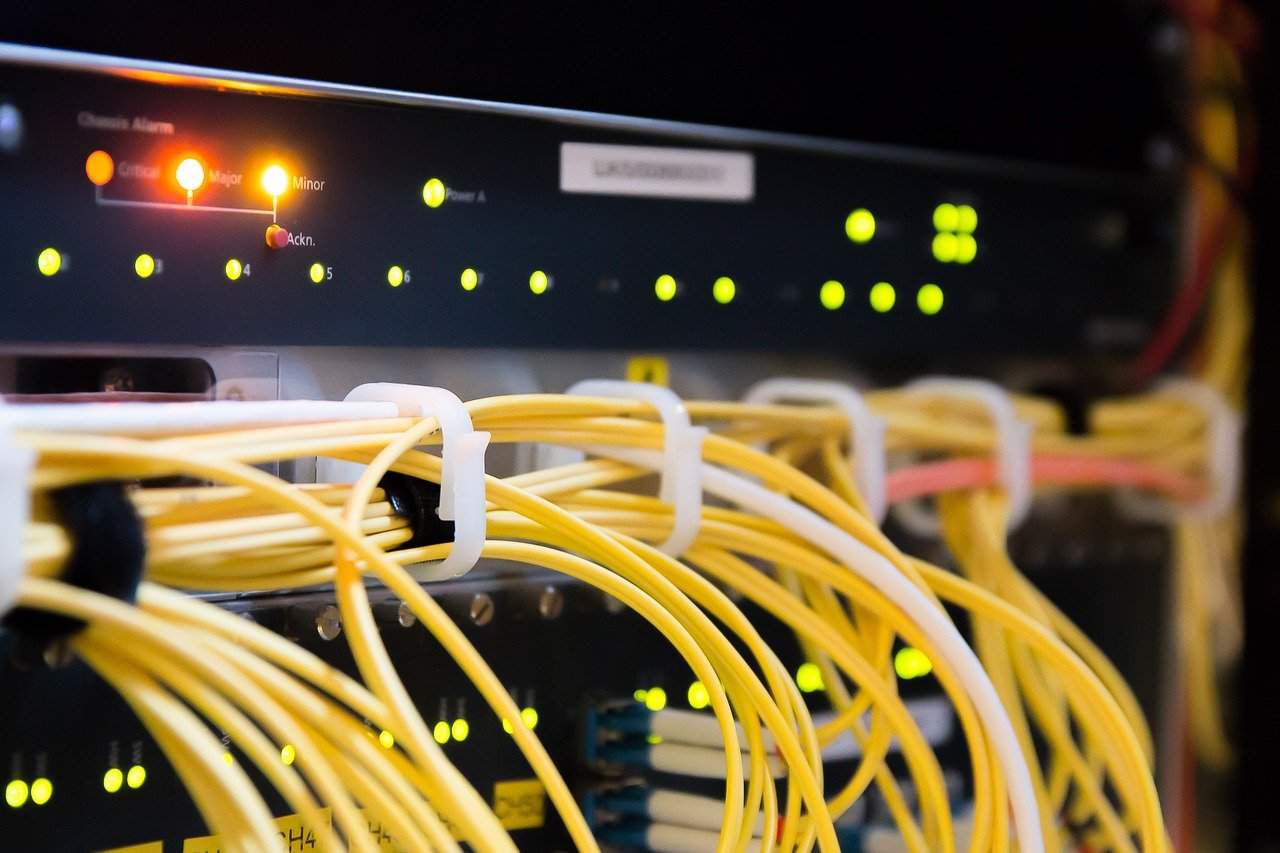A Comprehensive Guide to Testing Leased Line Connection Speed
-
April 23, 2024
-
7 min read

A reliable and high-speed internet connection is essential for businesses to operate efficiently. And many organizations opt for leased line connections to meet their demanding bandwidth requirements. Leased lines offer dedicated and symmetric internet connectivity, ensuring consistent performance and reliability. However, regular speed tests are essential to guarantee that the promised speed and performance are delivered. In this article, we will provide an extensive guide on testing the speed of a leased line connection to ensure optimal performance.
Importance of speed testing
Regular speed tests are crucial for ensuring that businesses get the most out of leased lines. These tests measure download, upload, and latency. It reveals if your connection meets the specified speeds. Slow speeds can cripple productivity for tasks like video conferencing, large file transfers, and cloud-based applications. Early detection through speed testing allows you to address issues with your provider and avoid frustration caused by a sluggish connection.
Preparations before testing
Before diving into a leased line speed test, some preparation ensures accurate results.
- First, confirm the contracted speed with the provider.
- Then, identify a wired connection on the network for the test, bypassing any Wi-Fi limitations.
- Close any bandwidth-hogging applications like streaming services or large downloads.
- Finally, choose a reputable speed test website with servers geographically close to your location.
These steps create a controlled environment for a clear picture of a leased line’s potential.
Methods for testing leased line speed
Testing the speed of a leased line connection is crucial to ensuring that it delivers the expected performance. Several methods and tools are available to conduct speed tests, each providing valuable insights into the connection’s performance.
1. Using online speed test tools:
One of the simplest ways to test the speed of a leased line connection is to use online speed test tools. Numerous websites offer free speed testing services. Popular speed test websites such as Ookla’s Speedtest.net, Fast.com, and Google’s speed test tool are widely used for this purpose.
Steps:
- Connect a computer or device directly to the leased line modem using an Ethernet cable.
- Close all background applications and ensure no other devices are consuming significant bandwidth on the network.
- Open a web browser and navigate to a reputable speed test website.
- Click on the “Begin Test” or a similar button to initiate the speed test.
- The tool will measure the download and upload speeds and the ping latency, and display the results on the screen.
2. Using dedicated speed test hardware:
Dedicated speed test hardware can be employed for businesses that require more advanced and accurate speed testing capabilities. These devices are specifically designed to measure the performance of network connections, including leased lines.
Steps:
- Connect the speed test device to the high-speed leased line modem using an Ethernet cable.
- Configure the device according to the manufacturer’s instructions. Ensure that it is set up to measure the desired parameters. These may include throughput, latency, and packet loss.
- Initiate the speed test from the device’s interface and allow it to run for a sufficient duration to gather comprehensive data.
- The device will generate a detailed report containing information about the connection’s speed, latency, jitter, and other performance metrics.
3. Conducting throughput testing:
In addition to measuring the raw download and upload speeds, conducting throughput testing is important. It can assess the actual data transfer capabilities of the leased line. Throughput testing involves transferring a large file or data stream across the connection. This is done to measure its sustained speed over an extended period.
Steps:
- Identify a large file or dataset that can be used for the throughput test, such as a multi-gigabyte file or a continuous data stream.
- Use a file transfer protocol (FTP) client or network testing tool to initiate the data transfer from a local server to a remote location over the leased line.
- Monitor the transfer speed and verify that it aligns with the expected throughput of the connection.
- Conduct multiple throughput tests at different times to account for network fluctuations and variations in performance.
Conducting this test can help businesses to keep an eye on fluctuations in connection and fix them soon.
4. Analysing service level agreement (SLA) metrics:
For businesses that have subscribed to a leased line service, it’s essential to review the SLA provided by the service provider. The SLA typically outlines the guaranteed performance metrics, such as minimum bandwidth, latency, and uptime commitments.
Steps:
- Review the SLA document provided by the service provider to understand the performance commitments and guarantees.
- Compare the test results, including download and upload speeds, latency, and other performance metrics, with the SLA specifications.
- Identify any deviations or discrepancies between the actual performance and the SLA metrics and escalate the issue to the service provider if necessary.
By comparing the actual test results with the SLA specifications, businesses can ensure that the leased line meets the agreed-upon service levels.
5. Engaging professional network testing services:
When businesses require a comprehensive and in-depth analysis of their business broadband connection, professional network testing services can provide valuable insights and recommendations. These specialized services utilize advanced testing tools and methodologies. They can assess network connections’ performance, reliability, and security, including leased lines.
Steps:
- Research and identify reputable network testing service providers with experience evaluating leased line connections.
- Discuss the specific testing requirements and objectives with the service provider. Outline the desired performance metrics and areas of concern.
- Schedule a testing and assessment session with the service provider. Allow them to conduct thorough tests and measurements on the leased line connection.
- Review the comprehensive report and recommendations provided by the testing service. Address any identified issues and optimise the connection’s performance.
Best practices for optimizing leased line speed
To extract maximum performance from your leased line, follow these best practices:
- Prioritise bandwidth: Identify and prioritise bandwidth-critical applications like video conferencing or large file transfers. Allocate resources accordingly to avoid bottlenecks.
- Monitor network activity: Regularly monitor network traffic to pinpoint bandwidth hogs. Streamlining background processes frees up resources for essential tasks.
- Update hardware & firmware: Outdated equipment can hinder performance. Ensure your routers, switches, and network interface cards have the latest firmware for optimal operation.
Regular monitoring and maintenance
Proactive vigilance keeps your leased line running smoothly. Some effective steps include:
- Schedule speed tests: Regularly run speed tests to track performance trends. Catch dips early to address potential issues before they become critical.
- Monitor uptime and latency: Utilize monitoring tools to track uptime and latency fluctuations. Identify anomalies that could disrupt operations.
- Review equipment logs: Regularly check router and switch logs for errors or warnings. These can signal potential hardware malfunctions or configuration issues.
By keeping regular checks on leased lines’ performance, businesses can use their connections to their full potential.
Conclusion
In conclusion, testing the speed of a leased line connection is essential for businesses to ensure optimal performance and reliability. By utilizing online speed test tools, dedicated speed test hardware, throughput testing, SLA analysis, and professional network testing services, organisations can comprehensively understand their leased line’s capabilities. And identify any potential issues or bottlenecks.
Regularly testing the leased line connection, especially during peak usage periods, can help businesses proactively address performance issues and maintain a high-quality internet experience for their operations. By adhering to the guidelines outlined in this comprehensive guide, businesses can effectively measure and optimize the speed of their leased line connections. This way, they can enhance their network infrastructure and support their digital initiatives.
For hassle-free and round-the-clock internet connection, Airtel Leased Lines can be a smart choice. It makes sure that your business stays away from the cripples of leased lines and focuses on more important aspects to maximise productivity.
 Share
Share









